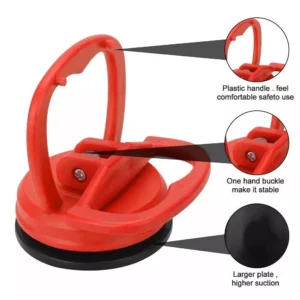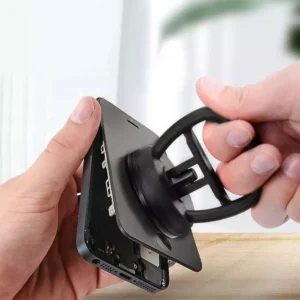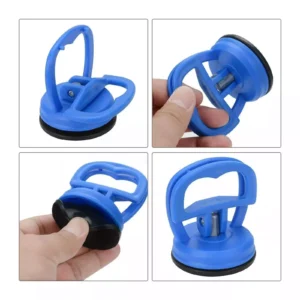In the field of auto repairs, dent pullers are somewhat common instruments. They provide a workable method for dented metal panel removal. This page addresses common questions, explains how a dent puller or a dent repair suction cup works, and contrasts it with other dent healing techniques.
How Do Dent Pullers Work?
An operating dent puller generates suction on the dented region. Applied properly, the suction cup seals tightly with the automobile panel. The dent is driven back into form with constant force. This method reduces the demand for strong chemicals or instruments.
Changing from conventional techniques, a dent puller provides a more under-control mending process. It lessens the possibility of more panel damage. Since it is safe and easy, users usually want it. This approach also promotes non-permanent repairs, preserving the original finish of the car.
How to Use a Dent Puller?
If you approach a dent puller methodically, it is easy. Here is a basic manual on using one:

- Wipe the dented area using a fresh cloth. Clear oil and dust to guarantee good suction.
- Orient the suction cup such that it lines the dent’s centre. Verify the cup covers the dented area completely.
- Make a seal by firmly pressing down. Many models use a lever or pump to turn on suction.
- Pull the handle slowly to go straight forward. Keep even pressure to prevent further damage of the panel.
- Stop and review the dent. If necessary, go through the process once more for an improved outcome.
These guidelines can help you to efficiently fix little dents. One must be calm and refrain from rushing through the repairs.
What Is a Dent Puller Used For?
- Small to medium-sized dents on car body panels are mostly removed with a dent puller. On metal surfaces especially it works quite well. When handling little mistakes in the parking lot, hail damage, or minor accidents, users commonly depend on this item. Without using intrusive methods, the dent puller gently brings the metal back into its natural shape.
- Apart from vehicle maintenance, a dent puller finds usage in several other fields. For metal-made objects with tiny dents, for example, it could assist in restoration Still, automotive body panels take the front stage.
Do Dent Pullers Work on Metal?

- Dent pullers are indeed made especially for metal surfaces. On automobile panels constructed of steel or aluminium, they perform really nicely. The suction system guarantees the tool follows the metal. Still, the depth of the dent and the state of the surface determine the efficacy. Professional repair techniques could be required for rather deep dents.
- Turning now to a pragmatic matter, metal has responded well when utilising a dent puller. Many people find good outcomes with moderate force applied. The way the tool is built assists the dent to have equal pressure distribution. The metal therefore slowly gets back to its natural form.
Does Pouring Hot Water on a Dent Fix It?
A widespread myth in dent repair involves pouring boiling water on a dent. Actually, hot water by itself does not straighten a dent. Though it is not a consistent fix, the technique could gently soften the metal. A dent repair suction cup presents a regulated approach directly addressing the damage.
When paired with other methods, hot water can occasionally be beneficial. Still, it is not a replacement for a good dent puller. The suction approach is still the recommended one since it reduces danger and is non-invasive. Thus, depending just on hot water is not advisable.
Comparison with Other Dent Repair Methods
Dent repairs can be done using several techniques. The following contrasts a dent puller with other popular dent repair options:
| Method | Mechanism | Advantages | Disadvantages |
|---|---|---|---|
| Dent Puller | Suction-based pulling | Non-invasive, user-friendly, precise | May not work on deep or complex dents |
| Body Filler | Chemical application | Effective for large dents, durable finish | Requires sanding and painting, more labor-intensive |
| Hot Water Method | Thermal softening | Simple, low-cost | Inconsistent results, potential risk of damage |
| Professional Repair | Specialized equipment & labor | High-quality, long-lasting repair | Expensive, time-consuming |
Advantages and Disadvantages of Dent Pullers
Every approach to repair has advantages and disadvantages. The benefits and drawbacks of a Dent Puller are summarised below:
| Advantages | Disadvantages |
|---|---|
| User-friendly and easy to operate | Not suitable for very deep or irregular dents |
| Non-invasive, preserving the original paint | May require multiple attempts for perfect repair |
| Cost-effective for minor repairs | Results may vary based on dent size and location |
| Reduces the need for professional intervention | Manual effort is needed for optimal results |
Although a dent puller is popular among car owners because of its benefits, its restrictions are highlighted in its drawbacks. On metal surfaces, it best performs for mild to moderate dents. Severe damage, on the other hand, could call for another method.
Useful Advice for Using a Dent Puller

These useful advice will help you to maximize the performance of your dent repair suction cup:
- Practice patience; avoid hurrying the repair job. Better outcomes come from a soft and consistent pull.
- Make sure the surface is clean since it increases suction and lowers the possibility of scratches.
- Use Correct Method: Pay great attention to manufacturer directions. This reduces possible panel damage to the car.
- Combine Techniques: Think about using gentle heating along with the dent puller for tough stains. Still, stay away from depending just on hot water.
- Evaluate damage: Not every ding is fit for do-it-yourself repair. See whether you require professional assistance.
These pointers improve your repairing technique. They also help lower the possibility of further injury.
Conclusion

All things considered, a dent puller is a versatile tool used to restore metal surface dents with the least amount of effort. It offers the most useful approach to dent removal from vehicle panels. The guide above covers how to operate a dent puller, its uses, and its limits. Comparisons with alternative techniques underline both its advantages and its shortcomings.
Clear tables and step-by-step directions abound; for those who enjoy DIY projects, they are useful tools. Although legends like the hot water approach endure, a dent puller is still the recommended approach for good dent treatment. Moving fluidly between several approaches guarantees you the best tool for the task.
The secret to good dentistry is ultimately process knowledge. Correct use of a dent puller will help your car to have a more polished and professional appearance. Accept these methods to preserve the visual attractiveness of your car and have a simplified repair process.

